What is Music Therapy and How Does It Work?
 Have you ever been going about your daily business, when all of a sudden you hear a song that takes you right back to a significant time in your life?
Have you ever been going about your daily business, when all of a sudden you hear a song that takes you right back to a significant time in your life?
Perhaps the music leaves you feeling calmer. Or happy. Or, let’s face it, downright sad. I am sure all of us can attest to the power of music.
Did you know, however, that music therapy is in itself an evidence-based therapy? Keep reading to learn more about the profession of music therapy.
Before you read on, we thought you might like to download our 3 Positive Psychology Exercises for free. These science-based exercises will explore fundamental aspects of positive psychology including strengths, values and self-compassion and will give you the tools to enhance the wellbeing of your clients, students or employees.
This Article Contains:
- What is Music Therapy and How Does It Work?
- A Look at the Psychology
- A Brief History of Music Therapy
- Research and Studies
- The Different Types and Methods of Music Therapy
- A List of Music Therapy Techniques
- What Does a Music Therapist Do?
- The Best Instruments to Use in Music Therapy
- Available Music Therapy Apps
- Voices: A World Forum for Music Therapy
- What is Music Therapy Perspectives?
- The 5 Best Books on the Topic
- Recommended Articles
- 5 Recommended YouTube Videos
- A Take-Home Message
- References
What is Music Therapy and How Does It Work?
Bruscia (1991) defined music therapy as ‘an interpersonal process in which the therapist uses music and all of its facets to help patients to improve, restore or maintain health’ (Maratos, Gold, Wang & Crawford, 2008).
A little later, in 1998, Bruscia suggested another alternative definition of music therapy as ‘a systematic process of intervention wherein the therapist helps the client to promote health, using musical experiences and the relationships that develop through them as dynamic forces of change’ (Geretsegger, Elefant, Mössler & Gold, 2014).
Does music therapy simply consist of music used therapeutically? As Bruscia’s definitions demonstrate, music therapy is much more complex. It shouldn’t be confused with ‘music medicine’ – which is music interventions delivered by medical or healthcare professionals (Bradt & Dileo, 2010).
Music therapy, on the other hand, is administered by trained music therapists (Bradt & Dileo, 2010).
How does music therapy work? Well, it is claimed that five factors contribute to the effects of music therapy (Koelsch, 2009).
Modulation of Attention
The first aspect is the modulation of attention. Music grabs our attention and distracts us from stimuli that may lead to negative experiences (such as worry, pain, anxiety and so on). This may also explain the anxiety and pain-reducing effects of listening to music during medical procedures (Koelsch, 2009).
Modulation of Emotion
The second way music therapy work is through modulation of emotion. Studies have shown that music can regulate the activity of brain regions that are involved in the initiation, generation, maintenance, termination, and modulation of emotions (Koelsch, 2009).
Modulation of Cognition
Music also modulates cognition. Music is related to memory processes (including the encoding, storage, and decoding of musical information and events related to musical experiences) (Koelsch, 2009). It is also involved in the analysis of musical syntax and musical meaning (Koelsch, 2009).
Modulation of Behavior
Music therapy also works through modulating behavior. Music evokes and conditions behaviors such as the movement patterns involved in walking, speaking and grasping (Koelsch, 2009).
Modulation of Communication
Music also affects communication. In fact, music is a means of communication. Therefore, music can play a significant role in relationships, as alluded to in the definition of music therapy (Koelsch, 2009).
- Musical interaction in music therapy, especially musical improvisation, serves as a non-verbal and pre-verbal language (Geretsegger et al., 2014).
- It allows people who are verbal to gain access to pre-verbal experiences (Geretsegger et al., 2014).
- It also gives non-verbal people the chance to communicate with others without words (Geretsegger et al., 2014).
- It allows all people to interact on a more emotional, relationship-oriented way than may be possible relying on verbal language (Geretsegger et al., 2014).
Interaction also takes place with listening to music by a process that generally includes choosing music that has meaning for the person, such as the music reflecting an issue that the person is currently occupied with (Geretsegger et al., 2014).
Wherever possible, individuals are encouraged to reflect on personal issues that relate to the music, or, associations that the music brings up. For individuals who have verbal abilities, another important part of music therapy is to reflect verbally on the musical processes (Geretsegger et al., 2014).
A Look at the Psychology
Looking at a psychological theory of music therapy is extremely challenging, given the fact that there are multiple ideas regarding the mechanisms of music used as a therapeutic means (Hillecke, Nickel & Volker Bolay, 2005).
The psychology of music is a relatively new area of study (Wigram, Pedersen & Bonde, 2002). Music therapy is a multi-disciplinary field, and the area of music psychology is an innovative interdisciplinary science drawing from the fields of musicology, psychology, acoustics, sociology, anthropology, and neurology (Hillecke et al., 2005; Wigram et al., 2002).
Psychologists use experiments and diagnostics such as questionnaires, and the paradigm of cognition, to analyze what happens in music therapy (Hillecke et al., 2005).
Important topics in the psychology of music are:
- The function of music in the life and history of mankind
- The function of music in the life and identity of a person
- Auditory perception and musical memory
- Auditory imagery
- The brain’s processing of musical inputs
- The origin of musical abilities and the development of musical skills
- The meaning of music and musical preferences for the forming of identity
- The psychology of music performance and composition (Wigram et al., pp 45 – 46).
In understanding how people hear and perceive musical sounds, a part of music psychology is psychoacoustics – one’s perception of music. Another important facet of the psychology of music is an understanding of the human ear, and also the way the brain is involved in the appreciation and performance of music (Wigram et al., 2002).
Lifespan music psychology refers to an individual’s relationship to music as a lifelong developmental process (Wigram et al., 2002).
A Brief History of Music Therapy
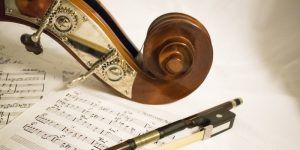
The earliest reference to music therapy was a paper called “Musically Physically Considered”, that was published in a Columbian magazine (Greenberg, 2017).
Even long before that, Pythagoras (c.570 – c. 495 BC), the Greek philosopher and mathematician prescribed a variety of musical scales and modes in order to cure an array of physical and psychological conditions (Greenberg, 2017).
However, perhaps the earliest account of the healing properties of music appear in the Jewish bible. In it, the story was that David, a skilled musician, could cure King Saul’s depression through music (Greenberg, 2017).
This was told in Chapter 16 in Prophets:
“And it happened that whenever the spirit of melancholy from God was upon Saul, David would take the lyre (harp) and play it. Saul would then feel relieved and the spirit of melancholy would depart from him”
(1 Samuel, 16:23).
There may even be earlier accounts of music therapy. Whether such religious texts are historically accurate or not, music was conceived as a therapeutic modality when such texts were written (Greenberg, 2017).
Music therapy emerged as a profession in the 20th century after World War I and World War II. Both amateur and professional musicians attended veterans’ hospitals to play for the veterans who had suffered physical and emotional trauma (The American Music Therapy Association, n.d.).
The impact of the music on the patients’ physical and emotional responses saw the doctors and nurses requesting to hire the musicians. It became apparent that the hospital musicians required training before starting, and thus ensued the beginning of music therapy education (The American Music Therapy Association, n.d.).
Research and Studies
To begin this discussion into musical therapy research, I will share a couple of Cochrane Reviews. Cochrane Reviews are systematic reviews that are internationally recognized as the highest standard in evidence-based health care.
A Cochrane Review of 5 studies examining music used in different ways as a part of the psychological treatment of people with depression found that reporting of the studies was poor. It did, however, find that most of the studies that made up the review did show positive effects in reducing depressive symptoms (Maratos et al., 2008). Therefore, the authors suggested that further research in this area is necessary.
Another Cochrane Review looked at 10 studies (a total of 165 participants) that assessed the effect of music therapy interventions that were conducted with children with autism spectrum disorder (ASD) over periods ranging from one week to seven months (Geretsegger et al., 2014).
Individuals with ASD experience impairments in social interaction and communication. Music therapy provides a means of communication and expression through musical experiences and the relationships that develop through them (Geretsegger et al., 2014).
Geretsegger and colleagues (2014) found that in terms of social interaction within the context of therapy, music therapy was associated with improvements in the non-verbal communicative skills, verbal communication skills, initiating behavior and social emotional reciprocity of individuals with ASD. However, there was no statistically significant difference in non-verbal communication skills outside the context of the therapy (Geretsegger et al., 2014).
In terms of secondary outcomes, music therapy was found to be superior to ‘placebo’ therapy or standard care in promoting social adaptation and quality of the parent-child relationships (Geretsegger et al., 2014).
In a Cochrane Review, authors found that a limited range of studies suggest that music therapy may be beneficial on improving quality of life in end-of-life care (Bradt & Dileo, 2010). However, the results are derived from studies that have a high risk of bias. Bradt and Dileo (2010) therefore concluded that more research into this particular area is needed.
In other studies, Klassen and colleagues (2008) looked at 19 randomized controlled trials and found that music therapy significantly reduced anxiety and pain in children undergoing medical and dental procedures.
The study also showed that rather than the use of music alone, use of music as a part of a multifaceted intervention may be more effective (Klassen, Liang, Tjosfold, Klassen & Hartling, 2008). The music is used to distract the patient from painful or anxiety-provoking stimuli, and this can also reduce the amount of medication required (Klassen et al., 2008).
Gerdner and Swanson (1993) examined the effects of individualized music in five elderly patients diagnosed with Dementia of Alzheimer’s Type. The patients resided in a long-term care facility and were confused and agitated.
Results from the study, both the immediate effects and the residual effects one hour after the intervention, suggest that individualized music is an alternate approach to management of agitation in confused elderly patients (Gerdner & Swanson, 1993).
Forsblom and colleagues (2009) conducted two parallel interview studies of stroke patients and professional nurses to ascertain the therapeutic role of listening to music in stroke rehabilitation.
They found music listening could be used to help patients relax, improve their mood and afford both mental and physical activation during the early stages of stroke recovery. Music listening was described as a ‘participative rehabilitation tool’ (Forsblom, et al. 2009).
The final study I will review, by Blood and Zatorre (2001) showed that music modulated amygdala activity. Using brain imaging techniques, the researchers played participants a piece of their own favorite music to induce an extremely pleasurable experience – described as “chills”.
In the control condition, participants listened to another participant’s favorite music. The intensity of the ‘chills’ experienced by participants correlated with increases in regional cerebral blood flow in brain areas believe to be involved in reward and emotion. This study supports the argument that music can induce ‘real’ emotions, as the brain regions for emotional processing were modulated by music (Blood & Zatorre, 2001).
The Different Types and Methods of Music Therapy
Music-based therapy is based on two fundamental methods – the ‘receptive’ listening based method, and the ‘active’ method based on playing musical instruments (Guetin et al., 2009).
There are two receptive methods. The first of these, receptive ‘relaxation’ music therapy is often used in the treatment of anxiety, depression and cognitive disorders. Receptive ‘analytical’ music therapy is used as the medium for ‘analytic’ psychotherapy (Guetin et al., 2009). ‘Music medicine’ generally involves passive listening to pre-recorded music provided by medical personnel (Bradt & Dileo, 2010).
In terms of other types of music therapy, there is the Bonny Method of Guided Imagery and Music. This was developed by Helen Lindquist Bonny (Smith, 2018). The approach involves guided imagery with music.
With music added, the patient focuses on an image which is used as a starting point to think about and discuss any related problems. Music plays an integral role in the therapy and may be called a ‘co-therapist’. Individual patient needs and goals influence the music that is selected for the session (Smith, 2018).
The Dalcroze Eurythmics is a method used to teach music to students, which can also be used as a form of therapy. Developed by Èmile Jaques-Dalcroze, this method focuses on rhythm, structure, and expression of movement in the learning process. Because this method is apt for improving physical awareness, it helps those patients who have motor difficulties immensely (Smith, 2018).
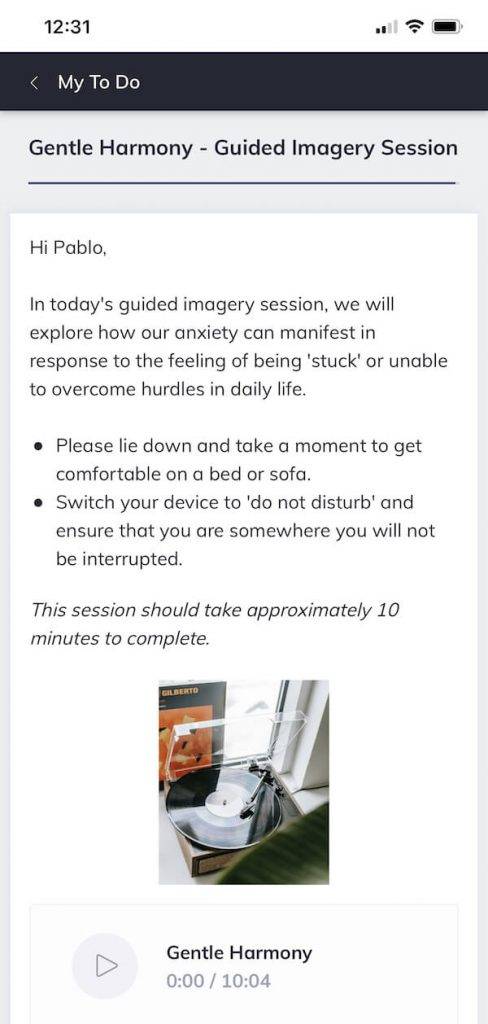
The therapist may also ‘prescribe’ music medicine or guided imagery recordings containing music for the client to listen to outside the therapy room by making use of a digital psychotherapy platform such as Quenza (pictured here).
Therapists can use modern platforms such as these to send pre-recorded audio clips directly to the client’s smartphone or tablet according to a predetermined schedule.
Likewise, the therapist can track clients’ progress through these audio activities via their own computer or handheld device.
It is thought that Zoltàn Kodàly was the inspiration for the development of the Kodaly philosophy of music therapy (Smith, 2018). It involves using rhythm, notation, sequence, and movement to help the patient learn and heal.
This method has been found to improve intonation, rhythm and music literacy. It also has a positive impact on perceptual function, concept formation, motor skills and learning performance in a therapeutic setting (Smith, 2018).
Neurologic Music Therapy (NMT) is based on neuroscience. It was developed considering the perception and production of music and its influence on the function of the brain and behaviors (Smith, 2018).
NMT uses the variation within the brain both with and without music and manipulates this in order to evoke brain changes which affect the patient. It has been claimed that this type of music therapy changes and develops the brain by engaging with music. This has implications for training motor responses, such as tapping the foot to music. NMT can be used to develop motor skills (Smith, 2018).
Orff-Schulwerk is a music therapy approach developed by Gertrude Orff. When she realized that medicine alone was not sufficient for children with developmental delays and disabilities, Orff formed this model (Smith, 2018).
“Schulwerk”, or ‘school work’ in German, reflects this approach’s emphasis on education. It uses music to help children improve their learning ability. This method also highlights the importance of humanistic psychology and uses music as a way to improve the interaction between the patient and other people (Smith, 2018).
A List of Music Therapy Techniques

- Drumming
- Listening to live or recorded music
- Learning music-assisted relaxation techniques, such as progressive muscle relaxation or deep breathing
- Singing of familiar songs with live or recorded accompaniment
- Playing instruments, such as hand percussion
- Improvising music on instruments of voice
- Writing song lyrics
- Writing the music for new songs
- Learning to play an instrument, such as piano or guitar
- Creating art with music
- Dancing or moving to live or recorded music
- Writing choreography for music
- Discussing one’s emotional reaction or meaning attached to a particular song or improvisation
What Does a Music Therapist Do?
This information about what music therapists do was found on the ‘Your Free Career Test’ (n.d.) website.
Music therapists work in a variety of settings, including schools, hospitals, mental health service locations, and nursing homes. They help a variety of different patients/clients.
A music therapist evaluates each clients’ unique needs. They ascertain a client’s musical preferences and devises a treatment plan that is customized for the individual.
Music therapists are part of a multi-disciplinary team, working with other professionals to ensure treatment also works for the client to achieve their goals. For example, if a person is working on strengthening and movement in order to address physical limitations, a music therapist could introduce dance into their treatment plan.
The Best Instruments to Use in Music Therapy
Therapists are advised to follow their own preferences, and as explained by Rachel Rambach (2016) a board-certified music therapist – instruments are the tools of a music therapist and should be specifically chosen based on the needs and goals of clients.
Some instruments are, however, more popular.
Muzique (a company promoting creative art experiences) has listed three instruments that have been proven most effective.
The first of these is the Djembe, or hand drum. Given that this single drum does not have a central melodic component, the client is free to express and connect with the musical rhythms without fear of playing a ‘wrong note’. The use of a small drum also facilitates a connection between the therapist and client by allowing them to be in close proximity.
They can play together at the same time, which may not be possible with a piano or guitar.
The guitar, according to Muzique (n.d.) is generally the top instrument used by music therapists. Again, a guitar can be used in close proximity to a client. The music therapist can also maintain melodic or harmonic control whilst allowing the client to play. The guitar can help maintain control in a group setting, but it can also be soothing and relaxing.
Muzique (n.d.) suggests that the piano is probably the instrument of choice when working with large groups. As the sound of a guitar can be drowned out by other instruments being played by clients, the piano can be more steady and holding background.
The music therapist should be mindful, however, of the apparent physical barrier between themselves and the client, and if possible, have the client sit next to the piano.
When Working With Children
Rachel Rambach (2016) concedes that there are certain instruments that she tends to utilize more often than others in her work with children. These include the 8 note hand bell set, which consists of a group of bells that each have their own color, number and letter of the medical alphabet (which can be ordered by pitch) and the mini guitar (which is very child-friendly and portable).
Another instrument Rambach (2016) likes is the frog guiro, which can be used in various ways – such as a guiro making a croaking sound, like a frog, or as a wood block. Castanets make a fun sound, and also help children acquire a pincer grip.
Rambach (2016) favors fruit shakers, which although they don’t make a unique sound, have a very realistic appearance and thus appeal to children. The cabasa does, on the other hand, make a unique sound and also brings in a tactile element to music therapy.
The cabasa is good for targeting fine and gross motor skills. The ‘lollipop’ drum is light, and not too loud so these are often preferred by Rambach (2016) over bigger paddle drums.
Rambach (2016) thinks every music therapist should have a ukulele. Their sound is sweet and inviting, and the ukulele makes the perfect alternative to a guitar.
They can be used as an accompanying instrument, but also for adapted lessons. Finally, the gathering drum encourages group cohesion in group settings or classes. They encourage children, or adult clients, to work together – sharing, and interacting with others (Rambach, 2016).
Available Music Therapy Apps
Anytune – slow down music BPM

Get it from the App Store.
Drum Kit

Get it from the App Store.
Freestyle
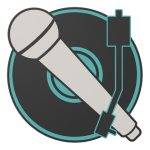
Get it from Google Play.
Garage Band
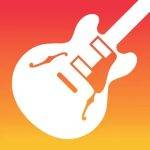
This app provides a great tool for song-writing or improvisation. The individual can create literally hundreds of realistic, high-quality sounds (Fandom, n.d.).
Get it from the App Store.
Guitarist’s Reference

The app provides guitar triads, arpeggios, a reverse chord finder tool, alternate guitar tunings, chords scale relationships and a guitar chord quiz (Fandom, n.d.).
Get it from the App Store.
Magic Piano

The app can also be switched to where you have to hit the right spot (or the note will sound out of tune if not) or just tap the screen with the rhythm. It has 4 different difficulty settings: easy, medium, hard and auto mode that senses the person’s ability after a few songs (Fandom, n.d.).
Get it from the App Store.
Get it from Google Play.
Real Guitar Free

It has a vast range of options and is perfect for both beginners and experienced guitarists (Sena, 2012).
Get it from Google Play.
Voices: A World Forum for Music Therapy
The following information was found on the ‘Voices’ website.
This is an open-access peer-reviewed journal. It welcomes dialogue and discussion across disciplines about music, health, and social change. The journal promotes inclusiveness and socio-cultural awareness. It features a focus on cultural issues and social justice.
‘Voices’ is published by the University of Bergen and NORCE Norwegian Research Centre through GAMUT – The Grieg Academy Music Therapy Research Centre. The vision statement of ‘Voices’ is:
“Voices: A World Forum for Music Therapy seeks to nurture the profile of music therapy as a global enterprise that is inclusive and has a broad range of influences in the International arena. The forum is particularly interested in encouraging the growth of music therapy in developing countries and intends to foster an exchange between Western and Eastern as well as Northern and Southern approaches to the art and science of music therapy”.
What is Music Therapy Perspectives?
An official publication of the American Music Therapy Association aim, is to inform readers from both within and outside the music therapy profession.
By disseminating scholarly work, this journal sets out to promote the development of music therapy clinical practice, with a particular focus on clinical benefits.
Music Therapy Perspective seeks to be a resource and forum for music therapists, music therapy students, and educators as well as others from related professions.
The Journal of Music Therapy
The Journal of Music Therapy disseminates research (edited by A. Blythe LaGasse) that advances the science and practice of music therapy. It also provides a forum for current music therapy research and theory, including music therapy tools, book reviews, and guest editorials.
“Its mission is to promote scholarly activity in music therapy and to foster the development and understanding of music therapy and music-based interventions…The journal strives to present a variety of research approaches and topics, to promote clinical inquiry, and to serve as a resource and forum for researchers, educators, and clinicians in music therapy and related professions”.
The 5 Best Books on the Topic (Incl. The Music Therapy Handbook)
There is such a lovely selection of books on music therapy, but to be concise, we only reflect on five.
1. Music Therapy Handbook – Barbara Wheeler
This book is a key resource for music therapists and also demonstrates how music therapy can be used by other mental health and medical professionals.
It provides case material and an extensive look at music therapy, including both the basic concepts as well as the emerging clinical approaches. It contains a comprehensive section on clinical applications.
Find the book on Amazon.
2. The New Music Therapist’s Handbook – Suzanne Hanser
This is a revised, updated version of Hanser’s 1987 book. It reflects recent developments in the field of music therapy.
This book serves as a ‘go-to’ resource for both students and professionals. It contains an introduction to music therapy as a profession, provides guidelines for setting up a practice, and describes new clinical applications as well as relevant case studies.
Find the book on Amazon.
3. Case Studies in Music Therapy – Kenneth Bruscia
This book is suitable as a reference, a textbook for students, or simply to provide an introduction to the field of music therapy.
It is made up of 42 case-histories of children, adolescents and adults receiving group and individual therapy in a range of different settings, in order to demonstrate the process of music therapy from beginning to end.
The book describes various approaches and techniques in music therapy, and captures moving stories of people worldwide who have benefitted from music therapy and the relationships developed with music therapists.
Find the book on Amazon.
4. Defining Music Therapy – Kenneth Bruscia
Bruscia’s book examines the unique difficulties of defining music within a therapeutic context and, conversely, defining therapy within a music context. It compares and examines more than 40 definitions of music therapy and provides a new definition.
Bruscia discusses each component of this new definition and by doing so suggests boundaries for what music therapy IS versus what it IS NOT.
Find the book on Amazon.
5. Musicophilia: Tales of Music and The Brain – Oliver Sacks
This book is slightly different to the others. It examines the place music occupies in the brain, and how music affects the human condition.
Sacks explores cases of what he terms “musical malalignment”.
He explains why music is irresistible and can be both healing and unforgettable.
Find the book on Amazon.
Recommended Articles
Bunt, L., & Pavlicevic, M. (2001). Music and emotion: Perspectives from music therapy. In P.N. Justin & J.A. Sloboda (Eds), series in affective science. Music and emotion: Theory and Research (pp. 181 – 201). New York, NY, US: Oxford University Press
Stultz, D. L., Lineweaver, T. T., Brimmer, T., Cairns, A.C., Halcomb, D. J., Juett, J. et al. (2018). “Music first”: An alternative or adjunct to psychotropic medications for the behavioral and psychological symptoms of dementia. GeroPsych: The Journal of Gerontopsychology & Geriatric Psychiatry, 31, 17 – 30. http://dx.doi.org/10.1024/1662-9647/a000180
Landis-Shack, N., Heinz, A. J., & Bonn-Miller, M. O. (2017). Music therapy for posttraumatic stress in adults: A theoretical review. Psychomusicology: Music, Mind, and Brain, 27, 334 – 342. http://dx.doi.org/10.1037/pmu0000192
Bell, T. P., McIntyre, K. A., & Hadley, R. (2016). Listening to classical music results in a positive correlation between spatial reasoning and mindfulness. Psychomusicology: Music, Mind, and Brain, 26, 226 – 235. http://dx.doi.org/10.1037/pmu0000139
Barrett, F. J., Grimm, K. J., Robins, R. W., Wildschut, T., Sedikides, C., & Janata, P. (2010). Music-evoked nostalgia: Affect, memory, and personality. Emotion, 10, 390-403. http://dx.doi.org/10.1037/a0019006
Ladviig, O., & Schellenberg, E. G. (2012). Liking unfamiliar music: Effects of felt emotion and individual differences. Psychology of Aesthetics, Creativity and The Arts, 6, 146 – 154. http://dx.doi.org/10.1037/a0024671
5 Recommended YouTube Videos
Some of these heart-warming videos are perfect to illustrate the benefits of Music Therapy.
What is Music Therapy?
This video features a board-certified musical therapist, Ryan Judd. He answers the questions “What is music therapy?” and “how do I find a music therapist?”
Music Therapy: Healing Music Sound Therapy for Relax, Chakra Balancing, and Well-being.
From the Meditation Relax Club.
Suitable for use in relaxation exercises or meditation, this video features peaceful, calming music set against a tranquil video.
My Job: Music Therapist
Trish, a music therapist, explains her role. She also explains how music therapy can help clients to meet both medical and emotional needs.
What a Music Therapy Session Looks Like
By sharing a description of working with a child with autism spectrum disorder, this board-certified music therapist explains what happens in a music therapy session. This video gives a brief snapshot of what music therapy looks like.
Music Therapy
This video shows the music therapy department at the Children’s Hospital of Pittsburgh of UPMC. It explains how board-certified music therapists assist patients to cope with procedures, pain and anxiety.
A Take-Home Message
The power of music has been evident since the earliest days of humankind. However, after the world wars of the 20th century, music therapy heralded the beginning of a powerful new profession.
Since then, various types and methods of music therapy have been developed, and music therapy has been practiced in a variety of settings with far-reaching benefits.
Hopefully, this article has provided you with a helpful overview of the music therapy profession. What are your experiences with music therapy? What do you think it offers clients in conjunction with traditional therapies? Or, have you had experience of music therapy as a stand-alone intervention? Please feel free to share your thoughts and ideas.
We hope you enjoyed reading this article. Don’t forget to download our 3 Positive Psychology Exercises for free.
- Blodgett, Ashley (2015). These 12 facts about music, and how they affect your brain, will astound you! Retrieved from https://www.unbelievable-facts.com/2015/04/facts-about-music.html/2
- Blood, A., & Zatorre, R. J. (2001). Intensely pleasurable responses to music correlate with activity in brain regions implicated in reward and emotion. National Academy of Sciences, 98, 11818 – 11823.
- Bradt, J., & Dileo, C. (2010). Music therapy for end-of-life care. Cochrane Database of Systematic Reviews, 1, Art. No: CD007169.
- Children’s Health Queensland Hospital and Health Service (n.d.). Music Therapy. Retrieved from https://www.childrens.health.qld.gov.au/fact-sheet-music-therapy/
- Everyday Harmony (n.d.). What is Music Therapy? Retrieved from www.everydayharmony.org/what-is-music-therapy/
- Fandom (n.d.). Music therapy activities wiki. Retrieved from https://musictherapyactivities.fandom.com/wiki/Music_Therapy_Activities_Wiki
- Forsblom, A., Lantinen, S., Särkämö, T., & Tervaniemi, M. (2009). Therapeutic role of music listening in stroke rehabilitation. The Neurosciences and Music III-Disorders & Plasticity: Annals of the New York Academy of Science, 1169, 426 – 430.
- Gerdner, L. A., & Swanson, E. A. (1993). Effects of individualized music on confused and agitated elderly patients. Archives of Psychiatric Nursing, 7, 284 – 291.
- Geretsegger, M., Elefant, C., Mössler, K. A., & Gold, C. (2014). Music therapy for people with autism spectrum disorder. Cochrane Review of Systematic Reviews, 6, Art. No: CD004381.
- Gold, C., Voracek, M., & Wigram, T. (2004). Effects of music therapy for children and adolescents with psychopathology: A meta-analysis. Journal of Child Psychology and Psychiatry, 45, 1054 – 1063.
- Greenberg, D. M. (2017). The World’s First Music Therapist. Retrieved from https://www.psychologytoday.com/au/blog/the-power-music/201704/the-world-s-first-music-therapist
- Guetin, S., Portet, F., Picot, M. C., Pommie, C., Messgoudi, M., Djabelkir, L. et al. (2009). Effect of music therapy on anxiety and depression in patients with Alzheimer’s type dementia: Randomised, controlled study. Dementia & Geriatric Cognitive Disorders, 28, 36 – 46.
- Hillecke, T., Nickel, A., & Volker Bolay, H. (2005). Scientific perspectives on music therapy. Annals of the New York Academy of Sciences, 1060, 1 – 12.
- Jacobson, V., & Artman, J. (2013). Music therapy in a school setting. Retrieved from https://williams-syndrome.org/sites/williams-syndrome.org/files/MusicTherapyTearSheet2013.pdf
- Klassen, J. A., Liang, Y., Tjosvold, L., Klassen, T. P., & Hartling, L. (2008). Music for pain and anxiety in children undergoing medical procedures: A systematic review of randomized controlled trials. Ambulatory Pediatrics, 8, 117 – 128.
- Koelsch, S. (2009). A Neuroscientific perspective on music therapy. Annals of the New York Academy of Science, 1169, 374 – 384.
- Levy, Jillian (2017). Music therapy: Benefits and uses for anxiety, depression and more. Retrieved from https://draxe.com/music-therapy-benefits
- Maratos, A., Gold, C., Wang, X., & Crawford, M. (2008). Music therapy for depression. Cochrane Database of Systematic Reviews, Issue 1, Art. No: CD004517.
- Muzique (n.d.). Top 3 instruments to use in a music therapy session. Retrieved from https://www.muzique.org/muziqueblog/top-3-instruments-to-use-in-a-music-therapy-session
- Nordoff Robbins (n.d.). What is music therapy? Retrieved from https://www.nordoff-robbins.org.uk/what-is-music-therapy
- Rambach, Rachel (2011). 12 songs every music therapist should know. Retrieved from https://listenlearnmusic.com/2011/03/12-songs-every-music-therapist-should-know.html
- Rambach, Rachel (2016). My top 10 music therapy instruments. Retrieved from https://listenlearnmusic.com/2016/02/my-top-10-music-therapy-instruments.html
- Scott, Elizabeth (2018). Music relaxation: A healthy stress management tool. Retrieved from https://www.verywellmind.com/music-as-a-health-and-relaxation-aid-3145191
- Seibert, Erin (n.d.). Mental health session ideas. Retrieved from https://musictherapytime.com/2015/12/24/mental-health-session-ideas/
- Sena, Kimberley (2012). Guest Post: Essential iPad apps for music therapists. Retrieved from www.musictherapymaven.com/guest-post-essential-ipad-apps-for-music-therapists/
- Smith, Yolanda (2018). Types of Music Therapy. Retrieved from https://www.news-medical.net/health/Types-of-Music-Therapy.aspx
- Soundscape Music Therapy (n.d.). Music Therapy Methods. Retrieved from https://soundscapemusictherapy.com/music-therapy-methods/
- The American Music Therapy Association (n.d.). Retrieved from https://www.musictherapy.org/
- Therapedia (n.d.). Music Therapy. Retrieved from https://www.theravive/therapedia/music-therapy
- Wigram, T., Pedersen, I. N., & Bonde, L. O. (2002). A Comprehensive Guide to Music Therapy: Theory, Clinical Practice, Research and Training. London: Jessica Kingsley Publishers
- Wong, H. L., C., Lopez-Nahas, V., & Molassiotis, A. (2001). Effects of music therapy on anxiety in ventilator-dependent patients. Heart and Lung: The Journal of Acute and Critical Care, 30, 376 – 387.
- Your Free Career Test (n.d.). What does a music therapist do? Retrieved from https://www.yourfreecareertest.com/what-does-a-music-therapist-do/
Let us know your thoughts
Read other articles by their category
- Body & Brain (41)
- Coaching & Application (49)
- Compassion (27)
- Counseling (46)
- Emotional Intelligence (23)
- Gratitude (16)
- Grief & Bereavement (19)
- Happiness & SWB (35)
- Meaning & Values (26)
- Meditation (21)
- Mindfulness (42)
- Motivation & Goals (42)
- Optimism & Mindset (33)
- Positive CBT (24)
- Positive Communication (21)
- Positive Education (41)
- Positive Emotions (28)
- Positive Psychology (33)
- Positive Workplace (38)
- Relationships (31)
- Resilience & Coping (33)
- Self Awareness (21)
- Self Esteem (38)
- Software & Apps (23)
- Strengths & Virtues (28)
- Stress & Burnout Prevention (27)
- Theory & Books (42)
- Therapy Exercises (30)
- Types of Therapy (53)
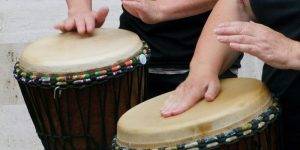

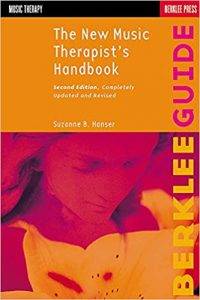

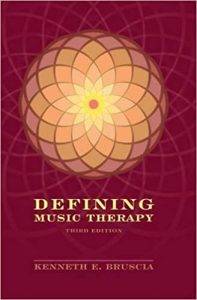

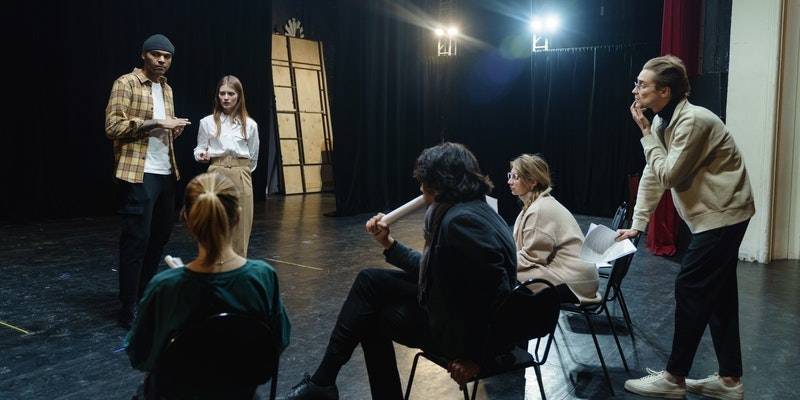


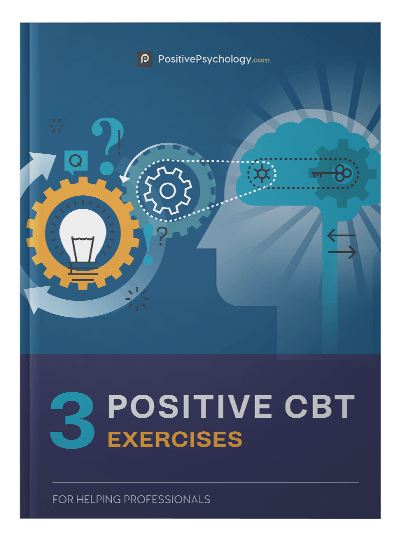
What our readers think
That was a great article .Thank you
So informative
Wonderful Post, simple, clear, direct, Very Informative…..Great Job Heather!!!…BRAVO,….Am musician, composer & arranger and I’m actually working on a Research Proposal for an MPhil by Research will be exploring in the field of Music Therapy.
All the Best to You Heather
Thanks for sharing, great article.
This was very helpful. It helped in my understanding of the connection between music and wellness.
This article is so good. I got all the information I need. Thanks for sharing.
That’s really nice post. I appreciate, Thanks for sharing.
Thank you Heather. I am researching music and the therapeutic effects it has on those of us with brain injuries, to put together a small book on How To Recover From. A Brain Injury.
Interestingly enough, my sister played music for me, while I was in a coma. I then went through a post injury (10 years later) phase of recovery where I loved live music. I would like to contribute this idea, although I am sure you are aware of it yourself, and that is the ability of music to bring you into the moment so fully, that all the deficits and disabilities fall away. I found my whole being enveloped in the music being performed, and forgot all about who I was.
It was fabulously wonderful to feel so lifted up from a world of always working on improving yourself.
Great book Heather with so much information, I am researching for a uni essay and this has been most helpful,